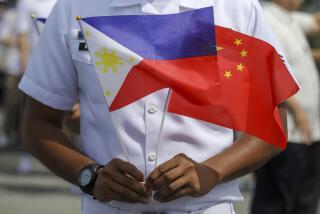Philippines: Now the Hard Part
- Share via
The Philippine government, from the faraway perspective of Manila, called it “the Moro problem” but preferred not to dwell on it. Now this persistent Muslim rebellion has come to an end, albeit partial, after a quarter-century of bloodshed. Exuded rebel leader Nur Misuari: “This will be written in the golden pages of history.” And Manila can close a chapter that has been a brutal drain on the nation’s atten- tion and its lives--more than 150,000 on both sides.
The rebellion against Manila and the vast Christian majority of the Philippines has been largely confined to the western reaches of the big southern island of Mindanao, around the historic city of Zamboanga and offshore islands in the Sulu Sea. The Moros bedeviled a succession of regimes, just as a century ago they harried the American army when the United States took over the Philippines after the Spanish American War.
The deal with Philippine President Fidel Ramos, a former general, was a trade of peace for authority. Misuari will be named head of a development council to improve conditions in the region, and in three years an election will be held to determine the size of an autonomous Muslim political region.
Whether the deal holds even for the three years is the first hurdle. Many Christian communities on Mindanao have no trust in the Muslim commitment to peace. The Zamboanga City Council has appropriated $192,000 to arm Christian citizens. And there is good reason for concern. Some Muslim guerrillas with Middle East connections through Malaysia and other Muslim states in Asia have denounced the peace.
Eventually Manila will have to deal with these hard cases. It should not wait for completion of the three-year test of Misuari’s stewardship. Reach out, President Ramos.
More to Read
Sign up for Essential California
The most important California stories and recommendations in your inbox every morning.
You may occasionally receive promotional content from the Los Angeles Times.










